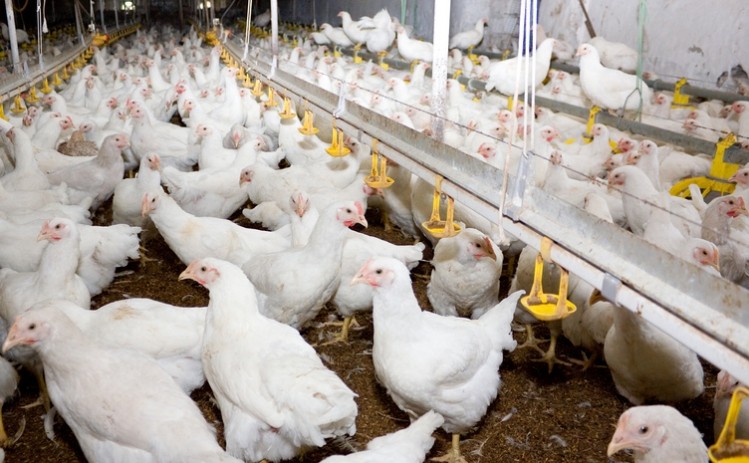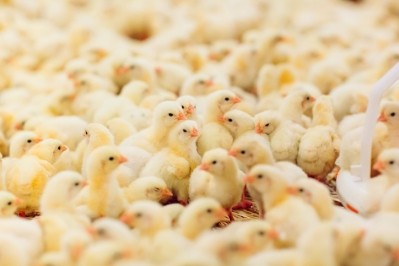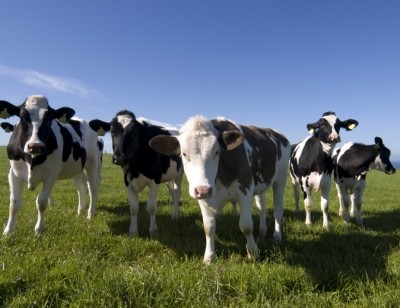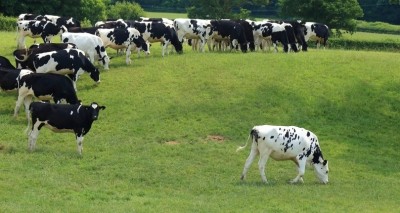Dietary protein level plays role in broiler heat stress response

A team of researchers from the Federal University Minas Gerais explored the use of a reduced protein diet in broilers facing normal or heat stress conditions in a series of feeding trials. The study was published in the journal Animal Feed Science and Technology.
“The objective of the present work was to evaluate digestibility and energetic utilization of diets formulated for variation in protein level but with constant energy level, and their consequences for broiler performance under heat stress and thermoneutral environment,” the researchers said.
The researchers found that for birds, in both normal and heat stress conditions, lowering dietary protein to 160g/kg crude protein (CP) reduced the digestibility of protein and ether extract and lowered the availability of net energy. Balancing diets for amino acids did not allow birds on the 160g/kg CP diet to match results for birds on the 220g/kg CP diet, they said. Diets with low CP content also proved to be more expensive.
“The level of 200 g/kg crude protein in the diet is ideal for maximizing broiler performance in thermoneutral temperature and cyclic heat stress, besides providing lower nitrogen in the excreta,” the researchers said.
Temperature and broiler efficiency
Work to improve the efficiency of broiler production needs to consider “economic viability, sanitary and ambiance of birds,” the researchers said.
The sector has been transitioning from open poultry houses to closed and negative-pressure facilities, which are climate controlled, they said. The ability to regulate facility temperature provides a means to address problems from seasonality and changes in outside temperature.
“When the internal conditions of a poultry house are ideal, birds respond with high feed intake and weight gain, and better feed conversion and mortality and also better digestibility and immunological response” they said.
Heat stress remains an important and challenging facet of global poultry production as bird sensitivity leads to production loss, they said. Heat stress has been linked to changes to bird respiratory and cardiovascular systems, immune function, behavior and nutrient use.
Heat stressed birds also have lower feed intake, reduced body weight gain, a worse feed conversion ratio and higher mortality, the researchers said.
“Research also suggests that due to their higher metabolic activity, modern poultry strains produce more body heat and thus are more susceptible to the consequences of heat stress,” they added.
Inconsistent results in the literature
Dietary levels of protein and energy are deciding factors for the cost of the feed, they said. “Studies on the effects that dietary crude protein level has on broiler performance under thermal stress remain contradictory,” they added.
“Low protein diets with the addition of synthetic amino acids have been recommended for alleviating symptoms of heat stress in broilers and to reduce nitrogen excretion,” the researchers said. “However, some studies have reported unfavorable results regarding performance compared to diets with normal levels of protein and amino acids.”
This finding can be explained by potential nitrogen deficiency for non-essential amino acid synthesis or by direct deficiency of essential amino acids for the maintenance of good performance, said the authors, citing Leeson et al, 2000.
On the other hand, they noted studies that recommended elevating metabolizable energy and crude protein together as an efficient way of improving bird performance due to increased nutrient utilization and a greater presence of oil such as work by Dale and Fuller, 1979, Attia et al, 2018, and Hassan et al, 2018.
Nonetheless, most of these nutritional changes face challenges regarding the costs and economic viability of diets, cautioned the team.
“It may be advantageous to maintain a constant supply of net energy in diets with low level of crude protein, provided that the necessary supply of amino acids is maintained,” they said. “On the other hand, diets with more inclusions of oils have been associated with improved energy efficiency (Hassan et al., 2018) and with reduced caloric increment, which can decrease the production of heat by animals, thereby providing more comfort and better performance.”
Feeding trial
In the present study, the first feeding trial saw 360 22-day old broilers receive one of four diets for a 20-day period in thermoneutral production conditions, the researchers said.
The isocaloric diets included varying crude protein levels at 220, 200, 180 and 160g/kg, along with corn, soybean meal and oil and meat and bone meal, they said. “The diets were formulated by digestible amino acid corrections (lysine, methionine, threonine, tryptophan, valine, arginine)."
In the second feeding trial, 360 birds received the same set of diets for 22 days while experiencing eight hours of high heat conditions and 16 hours of neutral temperatures, the researchers said. The cyclic heat stress was used to mimic summer production conditions.
In both experiments, birds were weighed on day 21 before being assigned to a trial diet, they said. Bird excreta were collected day 29-32 to assess dry matter, crude protein, ether extract digestibility along with analysis of apparent metabolizable energy (AME) and nitrogen-corrected apparent metabolizable energy (AMEn).
Birds were tracked for heat production and net energy balance, the researchers said. Nitrogen intake (Ni) and nitrogen retention efficiency were calculated.
Bird growth performance was measured through total feed intake, weight gain, feed conversion ratio (FCR) and viability and the European broiler index (EBI) was determined. A cost analysis was also completed.
Results
In the first feeding trial there was no difference in the digestibility coefficient of dry matter, but birds on the diets with 200 and 220g/kg CP had higher digestibility of crude protein and those on the 220g/kg CP had the highest digestibility of ether extract.
Nitrogen excretion was highest for birds on the 220g/kg CP diet and similar for birds on all other diets, they said. “Nitrogen retention efficiency was higher in diets containing 180 and 200 g/kg CP than the diet with 160 g/kg CP,” they added.
Broilers had similar heat production but those on the 200 and 220g/kg CP diets had lower caloric increment compared to birds on the 160g/kg diet, they said.
“The values of apparent metabolizable energy (AME) and net energy (NE) of the diets containing 200 and 220 g/kg CP were higher than those of the diet containing 160 g/kg CP,” the researchers said. “The ration with 160 g/kg CP had lower AMEn than the diet with 200 g/kg CP.”
Feed intake and viability were similar for all diets, but birds on the 200 and 220g/kg CP diets had the best weight gain, FCR EBI and cost, they said. Both the 200 and 220g/kg CP diets were cheaper than the other feeds.
In the second experiment, the digestibility coefficient for dry matter was higher for birds on the diet with 160g/kg CP compared to birds on the 220 and 200g/kg CP diets, the researchers said. Birds on the 200g/kg CP diet had the highest digestibility of crude protein and those on the 220g/kg CP diet had the best digestibility of ether extract.
All birds had similar results for nitrogen retention efficiency, they said.
However, lowering dietary protein to 160g/kg CP increased bird heat production and raised caloric increment as a function of body weight, they said. “For heat production as a function of metabolic body weight, higher heat production was observed in birds fed the diet containing 160 g/kg CP and supplemented with amino acids than those fed the diet containing 200 g/kg CP.”
Dietary protein level did not alter caloric increment as a function of birds’ metabolic body weight, they added.
The mean values of AME and AMEn were highest for birds on the 220g/kg CP diet, the researchers said. That diet had the highest net energy and generated the most nitrogen content in excreta.
Bird viability and feed intake were not altered by diet, but diets with more protein produced heavier birds and improved FCR compared to birds on the 160g/kg CP feed, they said.
“The diet containing 220 g/kg CP had a higher EBI when compared to the diet with 160 g/kg CP with synthetic amino acid supplementation,” they said. “The diet with 160 g/kg CP also had the worst feed cost/kg of chicken produced, while diets with 200 and 220 g/kg CP had lower costs than the diet with 180 g/kg CP.”
Source: Animal Feed Science and Technology
DOI: published online before print: doi.org/10.1016/j.anifeedsci.2019.114332
Title: Protein diets for growing broilers created under a thermoneutral environment or heat stress
Authors: K.R. Soares, L.J.C. Lara, N.R.S., Martins, R.R. e Silva, L.F.P. Pereira, P.C. Cardeal, M.P. F. Teixeira












